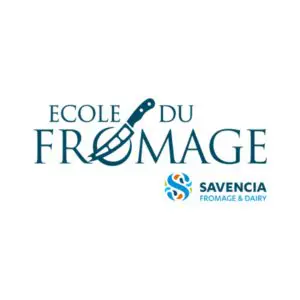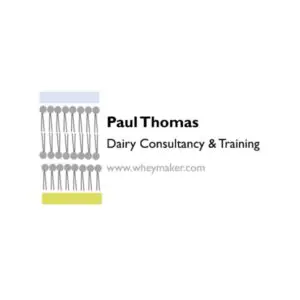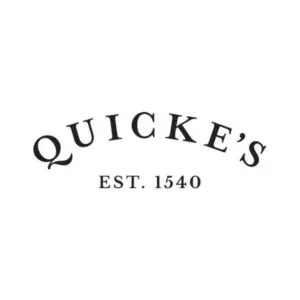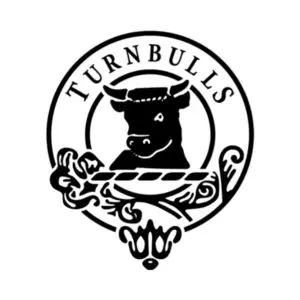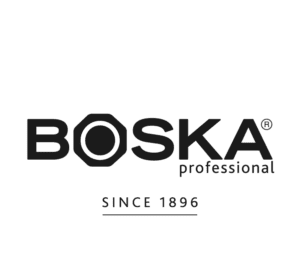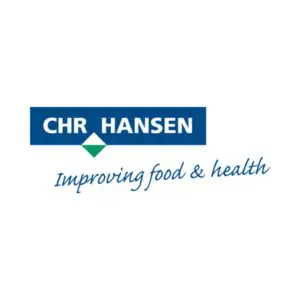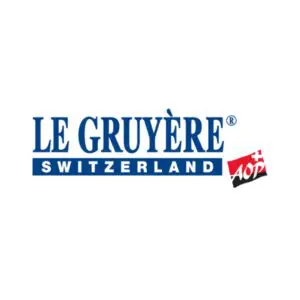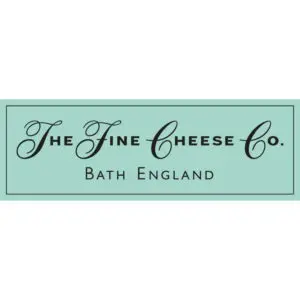#TNCN Meet Catherine Mead, maker of Cornish Yarg and current Chair of the Specialist Cheesemaker’s Association. Catherine will talk about the SCA, how it was founded by Randolph Hodgson of Neals Yard Dairies and is the constant support and guide to all the small and most innovative cheesemakers in the UK.
Streamed live on Sep 15, 2020
GUIDE TO TASTING CHEESE
Learn about the four stages of tasting cheese and how to take tasting notes with this definitive guide to tasting cheese.
The Specialist Cheesemaker’s Association Episode Video Transcript
It’s Tuesday Night it’s Cheese Night and I can’t find my own face, now that just doesn’t sound good so let’s get rid of the branding and start talking please. Well good evening everybody um i don’t know if you’re out there, I sent out a very incorrect tweet today saying that i already had this fantastic conversation which obviously yeah um that just goes to teach me to try and do things in advance when i’m clearly so much better just winging it.
Okay so a little bit about the Academy you all know the Academy of Cheese is the leading cheese training organization in the world ever, that’s not just me saying we have at least three other people who agree with me um and uh we’ve had a very good summer and we’re just kicking on it’s a second uh interview we’ve had we’ve got Catherine Mead. Now Catherine Mead is a fantastic individual she’s built up her cheese making company line of dairies to bring um artisan and large production cheeses into both the supermarkets and all across the deli’s in the uk which makes her a rare beast of being a mid-sized family business uh that is both doing well and creating new enough sound products so let’s meet up all right Catherine are you ready i know put your glass of wine down i can see it here we go okay hello how are you very well indeed charlie how are you i’m extremely fine extremely fine so uh how where are you is that’s a very sort of diary i’m i’m tonight i’m actually in uh near newquay but i live in falmouth down in west cornwall i wake up every morning to the sunrise over the harbour looking at the sea and over on the headland over roseland where i can see the fields of cows and um jeep and then i went my way over to the dairy which is about five minutes drive away in a very rural part of cornwall known as stevians and um we’re surrounded by trees woods um and probably not much else in truth um and it gets a bit wet down there on occasion we have 52 inches of rain a year which is probably about four times as much as you have on the west coast east coast of england so yeah we we’re pretty dumb i’ve driven through there many times it’s very beautiful you go down these little dells and the streams are coming down you get the thick hedges and the fields on the hills um it is very beautiful it must be good pasture it’s really good pasture and cornwall um that part of cornwall has um a lot of what they call grade two dairy land so this is permanent pasture permanent grasslays and um where is the best kind of land for um dairy production and our climate favors being out from mid-march maybe even earlier if we’re on a you know on a good season and we may bring the cows in again in november so we have a very long and extended grazing season which means that most of our milk comes from grass and through the winter of course we’re feeding salad so it’s a really um perfect environment for dairy and for um making producing milk fatigue yeah i was talking to mary quick who’s a bit north of you you’re probably the only person who is south well not many and she was saying that um you know you’re bringing your cows in for maybe eight ten weeks you know really not very long at all yeah you can keep them up for a fair time i mean it just depends on um it does depend on wind and rain so we can keep them out in the cold and and you could feed them hail you can keep them silage outside but um is when it gets particularly wet because apart from anything else you’re churning up your fields and therefore you’re you’re cutting up next year’s food but um you know we do have a very long extended grazing season it’s warm climate that is terribly wet but wet wet uh climates grow good grass so you know there’s a swing and a roundabout in that okay well we’ve just got a comment in from james he loves your cheese and he obviously loves the nhs as well um your cheeses are um they’re iconic now i want to come back to them because you’ve got your new kid on the cornish kern tasting tonight tasting tonight but as as much as we love your awesome products um you’re also uh care of the specialist cheese makers association which is like both the sort of flagship and lifeboat for all the small cheese makers of the uk it’s um the specialist cheese makes association it’s an amazing organization it’s a membership organization and we have 300 cheese making members i think the thing that is so special about the specialist cheese makers association and indeed specialist cheese making sector let’s say is it’s so entirely collegiate and supportive and we don’t see each other as competitors we see each other as friends and and that sounds corny and it sounds bright but there is so much gain from um supporting one another in endeavors that can be incredibly trying and incredibly difficult and there are moments when i i would doubt that there is a cheese maker who has not felt the deepest depths of despair in making cheese and the higher stages of elation when it goes right but cheese has uh has is is such an organic process and it just goes left field when you least expect it and sometimes um the the the conundrums and the challenges uh you know beyond sherlock holmes and and being able to as a cheese maker go into your membership organization and say help what earth am i going to do with this this has become such an intractable problem so we are very supportive we’re very um you know we we’re we’re real collective and we don’t see each other as a threat we see each other as um we we enhance the organization the more of us that are there the more contributions the better and the stronger we are as an organization and i think to that end we’re seeing that when we get into um those really very serious arenas of policy and government because they’re taking it seriously now they take us really seriously because they see how well we work together and um we’re very connected to our raw materials to farming many of us are farmers and producers and we um engage in in a really positive way both in terms of the agricultural environmental side but also in the um food safety you know food standards side yeah i don’t want to get into it tonight but the um the issues around raw milk are are forever popping their head up and needing to be addressed as people learn more and more about it’s it’s the challenges of handling it but also the opportunities that it provides i think we’ve we’ve worked so hard in the last 20 years at really um bringing every the the the policy writers the opinion leaders uh the champions together on the for the case for raw milk and why um why it is um it adds so much breadth and diversity to the cheese offer you know that that’s why we have so many amazing great cheeses and tonight we’re going to taste some cheese out three out of my four are raw milk and um that’s that’s not by way of saying i think raw milk cheeses are better than pasteurized juices but i think that warm milk cheese brings an extra dimension um an additional dimension and gives us that much greater diversity and i believe that we have um really been able over the last as i say 20 years to develop our thinking to vape our understanding and to bring people with us and i think our warm milk cheese makers would not feel the threats that they probably would have done 20 years ago from policy that was possibly going to start clamping down on raw milk yeah in the way we’ve seen in the us and in australia and that’s partly not totally but it’s partly because we’re very organized as an association and we are looking at continuous improvement and misunderstanding so you’re a supporter of cheese rights and that’s you know yeah cheese rice and cheese equality you know and we yeah we’re right behind her yeah all right well um you’ve chosen cheese tonight you have chosen from uh cumbria we’ve got whiny sometimes known as felston um we’ve got two from julie cheney and you’ve got your own cornish kern i’ve actually gone to ask if that’s okay so what do you want to bring in so i’m starting with saint jude which was julie’s first cheese so julie is based in suffolk she um is based on i think we pronounce it bungie um ben farm which is a farm where johnny crickmore farms um his mon bell yards and julie is a fantastic cheese maker she’s absolutely exceptional and she is so good at producing um soft white rinded raw milk jesus these are difficult pieces to produce at all sorts of different levels but julie is absolutely nailed it and um she um has worked with the specialist cheese makers over many years but recently and i picked she’s partly because it was an example of a project that we did with her um we hadn’t recently had an award called the the patrons award and our patron um his royal highness the um prince of wales um supported us in developing an award where we could um help uh cheese makers look at their succession planning so in agriculture generally we have a concern that there are some real crafts that could in time be lost if we don’t have successes coming through and julie is working with a cheese mate young cheese maker called blake and she really wanted to think about how she could remain engaged in the business but blake could move it on and so especially through the patrons award we were able to help julie um in developing her own thinking and and so the two of them to work together to to create a bit of a plan and um that is something that more cheese makers would benefit from i’m thinking about yeah no this is true we look at um uh cheese makers not just in this country but in italy and uh and france and in the old days it was you know just a fact that the children would somebody from the family would take on what their parents had done for many years and that’s just not happening is it’s more profitable to go and be a marketing specialist or a financial or something in the big city and stay around and frankly earn not very much and get up very early and get your fingers dirty and not have many friends being a cheese maker absolutely and there are many peacemakers who don’t have any natural successes for one reason or another and therefore they mean they need to look outside the family and if they’re looking outside the family it is trying to find a way that you know mechanism for doing that that um benefits both parties and ensures longevity for the product but saint jude is an absolute corker of a cheese um yeah now i don’t know if you can see that but the texture can i make this photo absolutely amazing texture the textures got almost like a filament kind of well you can focus my phone you can do it it’s almost got a filament type texture but when you put in your mouth you can’t feel those filaments at all it descends into just a very um a very creamy kind of paste and what’s a better word for it it’s like a mousse it is it’s like a sour cream mousse um and it’s got incredible attention i wouldn’t even argue it’s got even that hint of egginess that you get in in moose if you if you do know what i mean um and the way that the it’s come apart you’re just seeing these these these filaments of cheese compress i don’t know another cheese that has this texture i know lots of sort of um you know that that it describes itself as a san marcos style but it’s not really it just looks like no i think it did sound to its own and it’s um it’s got it it takes a sort of um a slight sort of grassy nuttiness and this sort of it’s so anxious it feels so indulgent and and so sort of um it’s it’s it’s creamy and it’s smooth but it’s not over rich um you just want more i i’ve got this piece here it’s going to be as much as i can do not to eat all of it well i i i don’t have any judgments i’m going to you’re going to i mean this is box of chocolates in front of the television isn’t it it is absolutely stunning this is um a cheese now i’m told because i’m not a cheese maker raw milk has possibly its strongest expression in these very young cheeses where the um the bacteria can most be shown to be at play if i can put it that way with reducing the flavors and let’s scent the textures and you do feel that this cheese is doing that it is um it’s like it’s a type of cooking with bacteria you’re using the bacteria to engage the cheese on a journey and deliver flavor and texture through it so everything has been happening very quickly in these younger cheeses and um if i had my glasses and i could see the date of production on this which i think this is probably only four weeks i’m guessing at it um because i haven’t got my glasses i can’t actually see clearly um but i think you’re absolutely right that it it’s the production i mean julia is a very she she handles her curds so gently and she’s so um and it’s but surely this is the best obsession is that um her contribution to her cheese is substantial and that to bring in another person to take her role cannot help but change the cheese surely another person may well um express it slightly differently but it doesn’t mean to say a slight differentiation would be a poor thing um and it if in that situation that their cheese making is so united the two of them that actually they’re going to be pretty close you’re going to get some changes and variation anyway because you’ll get changes because of the milk from week to week to week to week to week then you’ll get changes because the temperature outside is changing from week to week to week to week a week then you’re going to change a bigger impact on a fresh cheese than some other cheeses exactly and and then you’re going to get some changes because the molds are doing something slightly different in your maturing room because your humidity is fractionally changed or or your heat or um cold has slightly changed and so when you’ve conflated all of those different changes together and then you overlay another cheese maker you it’s amazing that you can get two products that ever taste the same really but but i think that they they come together and actually the cheese maker’s part in this in this kind of situation is such that you will get consistency in your jesus you’ll get more consistency between those two cheese makers probably than you will between the seasonality of the milk well i because of course all what you just said is true and it is most of the story but between leaving their farm and getting to me and leaving their farm and getting to you they’ve got a bit of character from that part of their journey as well so um you know i had went to my local cheese shop thank you very much fran uh dan she’s pleased and louis um and and she got these in for me today at extremely short notice and i was a bit concerned that this was going to be forced or under ripe or whatever so i’m this is without question what i’ve got in front of you today is the best in jude i’ve ever tasted it’s not it’s absolutely amazing isn’t it yeah um this one you know you’re looking at this and going because it’s it’s just screaming it’s like a red light going on oh my god how farmyard is this going to be and it ain’t it ain’t oh you’ve eaten it i’m yeah give me a chance i’ll finish it um be fair to be fair my wife just came in and and she’d nix some um she’s listening to it downstairs and she clearly couldn’t resist coming up for uh carrick exactly um uh right uh next up i think you better go to the sincere because it is it is a different take on the same product it’s a different take on the same chart so um uh julia’s worked very closely with neil’s yard dairy and um and they have this fantastic um spa determinants building their new building and um there’s this is um sincere is um a slightly more mature and washed bloomy ride so again have you got something charlie or not no you didn’t send me any oh god well my fault obe most importantly first in the country can’t even get me a decent cheese so you’ve got together off the camera your camera is going to make it hard for people to see okay i’m going to give it a go but to be honest in the box you’re going to see probably on camera very little differentiation no i can’t see anything it looks okay so we’re talking enough about another little wooden box this one is totally enclosed and this is i suppose in texture it’s like a very very ripe camembert so you’ve got a very um gloomy rind you’ve got some you know some proteolysis going on i.e the rind is breaking down under the rind is so so um liquid but the core is still quite hard and i’m going to eat this bit because it’s going everywhere let’s get rid of you and see if i can find one [Music] um and let’s go for the other one see if that’s any better oh it’s just that one again okay let’s get rid of that so you can see now that oh okay that was it but it’s it from the outside it looks a bit like um in a price doesn’t it yeah oh yeah very pale it’s very pale and it’s um it’s got that lovely nuttiness and very developed flavor i’ve got some linens going on in there and um you know that kind of you know that lovely smelly rind but i love this cheese because some of those smelly rind cheeses deliver really really hot heavy on um aroma but not so well on taste you know you could be a little bitter you take it to your nose you take it through all through your nose in the back of your throat and think wow this is going to taste you know amazing and actually when it gets your mouth you think oh hang on there wasn’t so much going on in that one whereas this jesus almost the opposite so you’ve got a fantastic mushroomy celery little bit as in seller rather than celery cellar sort of um dampness humidity but actually that flavor is really really present and so rounded and nutty and um again likes and juice really anxious but a bit more dense than in its paste than some jude but it feels so luxurious it’s fantastic absolutely wonderful so this is the cheeses of washed rind cheese would you um does it have any of those sort of meaty elements that you might get on a cheese like this ty i’m getting a tiny bit but not masses not masses i am i’m getting i i feel like have more um it’s more sort of herbace and and vegetably um and a little bit you know with some nuts and grassiness more of those sort of little bits of cabbage but um it it’s just got a sort of just a different dimension dude and the texture how has it changed from some dude how’s the texture moved on those and dude is moussy and light and fluffy and a little bit um uh striated whereas whereas um the sincere is much has got this sort of like more like a you know really broken down camembert kind of firm in its core and then the rind that’s just breaking down gently and gets sort of that runniness under the rind so you get that sort of um you know the the two textured feet without getting slipped skin or anything like that you’ve got just a really beautiful combination of gooeyness and and a little bit of firmness in the core i’m guessing i imagine it’s right that that you leave this to mature longer and it just becomes really seriously gooey throughout and you take it out of this little beautiful little wooden bolt and it will just walk across your table because this is this is an example of the collaboration you’re talking about in the fca you’ve got a cheese made by one member and she’s brought on by another member another member yeah and and that belief that um uh creating a new cheese um is is a is a team effort you know it’s something that you can get together and bring something new on there’s the skills of affinage which in real terms are sort of newly identified in this country more of a european thingy um yeah and now are now you know in in the in europe ethnicity is very much thought of as a separate sport you know you have the the maker and the and the afternoon [Music] and bringing that in through the specialist cheese makers association uh through members like you know nielsen allows us to develop more cheeses more different types yeah to appear in our industry that allow them you know which perhaps the cheese maker themselves doesn’t have the skill or the time or or or the opportunity to develop themselves absolutely absolutely and um i think that also you know a good afternoon um and there aren’t that many in this country but the number is growing and so there is greater interest than we ever had before and you know a really good affiner does um significantly enhance there’s so much uplift um from um the more straightforward presentation because they are looking at cheeses and judging when the cheese is ripe for for certain markets because you know one market doesn’t necessarily want the cheese at the same point in time as another market and they have the ability to take it on and really sensitively work with that cheese until they get it to just right because this jesus she’s like this will be absolutely cutting example i’ll be sending it out to some customers who are saying i’d like saint jude and sarah and i’d like to have it with a shelf life of two weeks it’ll be here and gone therefore let’s keep it because they’re gonna have it for no time at all where conversely others might say well i’d like it for six weeks in which case you’re going to have to get it ready to go and assume it’s going to be within uh you know a week of arrival but it’s also got to keep performing for six weeks beyond that which is quite a challenge let’s let’s turn to um now you the purchase you picked out is when yates when you eat yeah so when yates um this is tom and clenna uh uh nobody who are up on the edge of cambria uh cumbria and they have been um making a raw milk wednesday day and i think this cheese is fascinating because again you’re getting so much of the um the flavor of the grass coming through the flavor of the herbage um let’s look at it so come back okay you see that just about interestingly we’ve got a bit of we’ve got a bit of maturing under the rind um this is um a cheese that ordinarily i would expect to be pretty acid pretty pretty crumbly um and in quite an open texture and and this cheese is not acid it’s not open um and it’s not crumbly um it’s it’s a much closer texture uh it breaks very gently and it’s got sort of a softness and ply it it’s quite pliable but the interesting thing about it very very distinctive flavor um but it’s not a flavor that we necessarily associate with um that very acid wendy dale that we we meet most normally if it doesn’t look like a wednesday down and it doesn’t taste like a winter dale why is it wednesday though because it’s made to the recipe wednesday day so it will be made with this fairly quick acid profile and it will be made in the fashion of um wednesday dale the original recipe and it is a lot of these territorials have many facets to them they weren’t all made in exactly the same same way i mean the one we’re all very familiar with his lancashire you know where you’ve got um you know the acid acid lancashire and and the soft buttery lancashire and so was the same with um uh with wenzidel but another one you’ll be familiar with is the red leicester and um you know sparkling is an extraordinary example of a traditional red leicester made in a traditional way but not the recipe that we’re so very used to at the moment and it’s true it’s true i i i always think of myself as a bit of a um i think you need to get on the skin of some of these things because it’s not enough to use a traditional recipe because a lot of things that we do today aren’t traditional we have fridges we have um dairy um different hygiene standards we have different breeds of cattle i mean the black and whites that you know are the majority of the milking herd in the uk weren’t introduced into the uk until the 1940s and 1950s so a lot of the history of our um of our cheese making recipes date back to a time when they weren’t using the tools we’re using today and the ingredient to say with all honesty we’re using something more traditional or something more original than someone else when we’re starting from the base of we’re not using the same ingredients but not using the same tool i mean red leicester for example um you know i was chatting to um david clarke and he produced this book about the red leicester and he was talking about the grass that he was feeding it um they were feeding red leicester back then was a much worse quality of grass lots of greens lots of wet more sort of quasi-Meadow pasture rather than the high quality pasture that we’re feeding you know repeating today and any cheese maker goes on about the fact that the feed is so important um so so it is it is quite difficult i think to plot our way back through time to be sure we know what we’re talking about and it seems to me that the sca has a real resource there to help people understand how their decisions are traditional but also modern yeah absolutely and um i think i think there was a couple of points um some of our territorials have been quite lost and they’ve been commoditized so we’re used to seeing um a style of red leicester or cafe or cheshire that comes in a backpack bag and it’s made in a big block to a specific recipe and if you want any of those cheeses that’s the cheese you’re likely to get because it it’s the one most effect widely at a point in time when um those cheeses would have been made right across the wednesday area or right across the cafe area um there would have been huge variation in the cheeses that were made they wouldn’t all tasted just the same because every uh farmstead that was making the cheese would have had their own take on on you know what tasted good and what they wanted to do so i think you know i think that this is just getting behind that um the spirit of again diversify diversity and breadth and not all having producing the same thing okay okay time to talk about you your cheesecake the cornish curd this is an amazing cheese this is this is um this is all a fusion cheese you’ve got you’ve got a style well here’s slightly you’ve got a gowdy-style wash curd you’re using alpine starters you’re using that buttery west country milk you’re maturing it in your own um uh in your own biome um you’re using um uh um what an a rind that sort of allows it to breathe but also blocks out the development of molds and which is a very modern technology you know they had traditional methods of rubbing or something but so this is this is this is cutting edge technology it’s all over the shop really isn’t it it’s coming up with it is cheese makers go mad isn’t it um well we we started with a gowda recipe and we we really enjoyed the gowdas but we wanted to just shift the flavor profile a wee bit and so um and we started experimenting with some of the alpine um the alpine uh starter cultures this is this cheese here is um 25 months we we’ve been working towards trying to get a slightly younger profile but actually we’re finding that it’s just mellowing out and becoming so sort of um sweet and savory so close textured a little bit of crystal development we’re getting so much from it at that at that um extra sort of four or five months it’s really worth hanging on in there it feels like a long time to wait for cheese but it’s yeah but it’s two biggest influences in gowda and sort of the alpines they both very much flower at that 12 14 16 month period don’t they they’re really you know gowda is arguably the most boring cheese of the world when it’s young i mean it is the least tasty well come on you know what i mean it’s got that kind of elastic kind of really it’s it’s no you say what you really feel okay well somebody has to be able to support you it but it comes it’s like it’s a late developer it’s like me it’s like me you know you didn’t want to know me before i was 25 i was i was all over the shop but at 150 next year i’m coming into my prime and that’s like that’s my counter you know i’ll um i’ll bear that in mind every time i’m tasting kern now okay i don’t want to ruin it for you you don’t want to ruin it it does it has been quite a surprise to us that it does seem to just be getting better and better as it gets older so the interesting thing is how far are we going to take it um from a commercial point of view it’s not great having cheese on the child no i’m pretty sure that’s true we we don’t really want to work into the world of you know the bank of pharmaceum but um it is really interesting and people say you know people but i think there’s a common perception that because it’s older it means it’s stronger and actually if stronger means more acid and stronger means a little bit more of a kind of kick at the back of the throat this juice has none of those things but it’s just developing that sort of intensity um and you get a sort of much greater lab more levels of complexity through it so um we at the moment we’re feeling it’s more interesting at this stage and certainly when we’re grading we are just saying no let’s hang on let’s hang on so um we’re doing it to ourselves a little bit well well um i mean that just brings us up to the point is you got the top of the tree the best cheese awards in the world world cheese awards supreme champion with this chat we did all right can you believe it 17. 17 yeah yeah absolutely something else isn’t it weren’t we in norway in 2018. oh i can’t remember it all fuses into one you say that do it because they like each other well i’ve been drinking with you in all these strange places and i can i can reassure our business at our watches that these people really do like each other except when the previous show tim jones starts playing poker and then it goes a bit sideways just don’t say that don’t do that um uh Catherine it’s been an absolute pleasure to talk to you thank you so much um have been great and yes great keeping the specialist cheese making is that bright shining light of cheese knowledge and cheese love that keeps these small cheese makers producing their awesome products yeah thank you and yeah thank you on behalf of the cheese members you know for all your support charlie because through the academy and the guild and the world cheese awards you do amazing things we’re really grateful really grateful well that’s all that’s all feel the love and keep on raising glasses and catches yeah thank you very much Catherine cheers thank you that was the inestimable the amazing Catherine Mead obe uh she is a real shining light a shiny like it is fantastic to see so such a such a skilled person treading that difficult path of commercial success and fantastic ultrasound skills so uh let’s have a quick look forward next week we’re exploring the world we’ve got a specialist south america’s only wine scenario cool um and some south american cheeses from chile uh and we’re gonna be talking to our cheese south american cheese specialist as well so having done the best of the british we are now reaching across all the way down to the south atlantic and the uh so i hope you’ll join me next week always a tuesday always chat all the viewers about cheese so and if you need to learn any more about cheese you’ll be pleased to know that i am doing online courses the level two we’re going to be launching that in november so if you’ve done your level one cheesy academics and you want to do level t level two then my uh succinct yet verbose version of teaching is available to you love you very much see you next week it’s been tuesday night it’s been cheese night you





